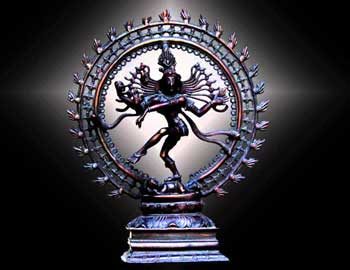India is a land of beauty, art and a land of diversity. In spite of its varied cultures and traditions it is united by the melodies, the rhythms, and an unparalleled zest in enjoying music! It is not a surprise that each of these diverse regions have evolved a distinctive style of music and dance adding more colours to this already rich culture of India. Dance is an emotion, Dance is an Expression, Dance is freedom and Dance is a way of life. India is home to many different dance styles. All these dance forms were suppressed during the British rule and after independence Indian Government has taken great efforts to re-establish these jewels of the Indian culture. India Post in 1975 has commemorated these Indian Classical Dances on Stamps.
The tradition of Classical dance in India can be traced back to the Indus Valley civilization with the finding of the famous bronze “Dancing Girl”. The continuations of this magnificent manifestation of Nataraja’s cosmic dance differ in various classical dance styles. Let’s tour the musical and colourful world of Indian classical dances!

- Bharatnatyam: Getting its name from Bharat Muni, the composer of “Natyashastra” – which is often considered to be the 5th Veda – Bharatnatyam is the traditional classical dance form originating from the state of Tamil Nadu. With its antiquity going as far back as 3000 years, it has been the richest and oldest dance form of India. Characterised by disciplined movements, Bharatnatyam is essentially a solo dance form often performed in temples. The dance is usually accompanied by classical Carnatic music. The whole idea of this dance form is in harmony and beauty of the symbolic poses. A Bharatnatyam dancer is considered to be an icon of beauty and perfection.
- Odissi: A dance form that originated in the ancient temples of Odisha, Odissi is sometimes also referred to as “Orissi” in literatures. This dancing tradition is almost two thousand years old and has originated from Devadasi tradition – like most of the classical dance forms of India. Further like all the Indian Classical dances, Odissi too mostly revolves around the life story of Shri Krishna. The dance movements and postures in Odissi follow the strict pattern of Natya Shastra and are beautiful to look at. The torso movement is very important and is a unique feature of the Odissi style. Fluid movements with a firm stance define this dance form. An Odissi orchestra essentially consists of a pakhawaj player, a singer, a flutist, a sitar or violin player and a manjira player.
- Kathak: “Katha kahe so Kathak kehelaye”, Having its origins in the story telling travelling bards of ancient northern India, known as Kathakars or storytellers, Kathak has come a long way from being a nomadic bard to a temple art form to the Persian influenced dancing style that we see today. Stylised fluid bodily movements mixed with fast rhythmic footwork and ‘chakkars’ (spins) characterize this dance form which predominantly evolved in northern India. Being a storytelling art form, Kathak has a wide spectrum of diverse topics ranging from lord Krishna to depicting various moods of the lovers in union and separation! Due to many influences Kathak is considered to be one of the most versatile of classical dance forms of India.

- Kathakali: Getting its name from the rich traditions of storytelling in our nation, Kathakali is a highly dramatic dance form which originated from Kerala. One of its distinctive features is its elaborately colourful make-up, costumes and face masks which change according to the characters played by the artists! Traditionally performed only by males, recent times have seen a steady increase in female dancers/actors too. A Kathakali performance incorporates movements from the ancient martial arts and athletic traditions of south India. Kathakali is also considered as one of the oldest theatre forms in the world. Large headdresses and extremely colourful make-up takes the audience into a world of wonders!
- Kuchipudi: Kuchipudi dance style is nearly same as Bharatnatyam but is more fluid and less solemn than it. This Dance form gets its name from the village in Krishna district of Andhra Pradesh named Kuchipudi – shortened form of the full name Kuchelapuram or Kuchilapuri – where it evolved. Tracing its origin to Bharat’s Natya Shastra, evidences of Kuchipudi are found in copper plate inscriptions from 10th CE suggesting to its evolution in the early medieval times. Mostly revolving around the stories of Lord Krishna, Kuchipudi basically portrays Vaishnavism. Accompanied by mridangam, cymbals, veena, flute and the tambura, Kuchipudi dance songs are mostly sung in Telugu language in Carnatic music style.
- Manipuri: The most beautiful and unique dance form of the Indian dance traditions! Eternal love stories of Lord Krishna and Radha or the ‘Raas Lila’ is perfectly executed in Manipuri. Evolving in Manipur, a north-eastern state of India – often referred to as ‘Gandharva-desa’ – the artists call themselves as ‘Gandharavas‘, the celestial singers, dancers and musicians mentioned in Vedic texts! Beautiful dresses and reflections of Southeast Asian culture makes Manipuri unique than the rest of the Indian Classical dances. Though stories of Lord Krishna find a foreground in Manipuri, stories from other sects like Shaktism, Shaivism and Sylvan deities called Umang Lai etc are also performed on.
These Indian classical dances on stamps truly justify the “diversity” of Indian cultural, don’t they? Interested in buying stamps? Click here to shop for your favourites.
Happy Collecting and Keep Visiting!
The Mintage World Team comprises of experts, researchers and writers from the field of Philately, Notaphily and Numismatics who try to shed light on some of the most interesting aspects of coins, banknotes and stamps from not just India but across the globe as well.


Useful information for the Indian culture lover.